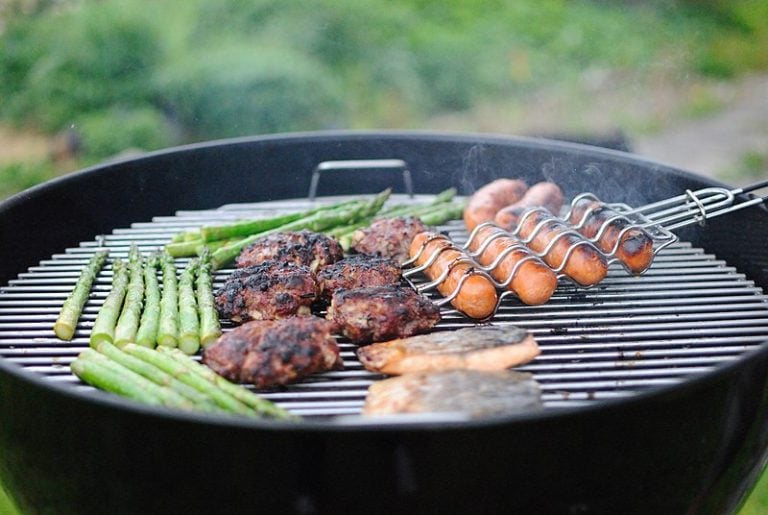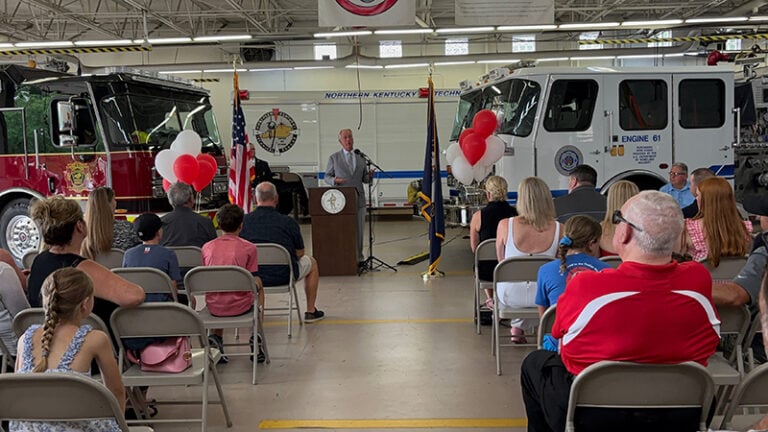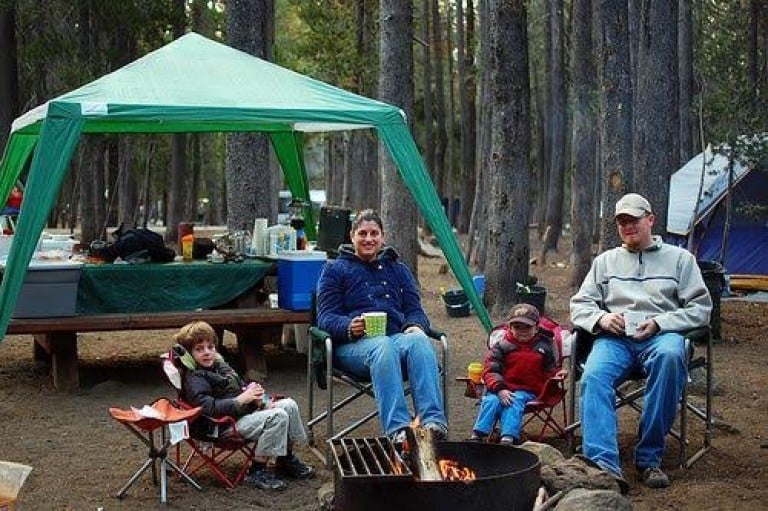Restaurants on wheels are the new rage when comes to urban eating. On the surface, they threaten the brick-and-mortar restaurants as they have been eating into their profits. Some complain that these mobile businesses have an unfair advantage because they don’t have to maintain a building, pay the same in rent/mortgage, utilities, insurance and property tax.
It’s easy to understand their concerns, but it’s capitalism at its finest, where entrepreneurs with the best idea and the best product always triumph. Their humble roots began with plastic-wrapped bagels, baked goods and sandwiches pulling up to construction sites, office complexes and county fairs.
The food truck industry continues to grow, according to data collected by Campus Firewatch from Mobile-Cuisine.com. It is listed at $1.2 billion, while others have estimated it is a $2 billion industry that is growing with a 12 percent increase during the past five years.
 According to a MML&K blog, the food truck industry in Kentucky is a largely new enterprise with an evolving set of laws and regulations that can often be a tangled mess for food truck owners. Food trucks are inherently mobile, but food truck regulation is decidedly local, with differing sets of requirements across jurisdictional boundaries where each county and city can impose further requirements or restrict food trucks altogether.
According to a MML&K blog, the food truck industry in Kentucky is a largely new enterprise with an evolving set of laws and regulations that can often be a tangled mess for food truck owners. Food trucks are inherently mobile, but food truck regulation is decidedly local, with differing sets of requirements across jurisdictional boundaries where each county and city can impose further requirements or restrict food trucks altogether.
The regulation of food trucks is left largely to local health departments. Food trucks can register and pay a small fee for a statewide permit in a particular county. The purpose of the statewide permit is to ensure that the food truck itself is compliant with state regulations concerning plumbing and other public health considerations.
The surge in popularity of food trucks has also added a new challenge for insurers, health inspectors and safety professionals with their unique set of risk exposures — is the food they serve sanitary and safe to eat?
Local food trucks are licensed every year, but their initial inspection takes place when the mobile unit is not serving any food. Once the trucks go on the road, health inspectors must rely on spot inspections to evaluate how closely food-handling codes are followed.
In addition to food safety concerns, food trucks pose their very own special risks. When you’re getting a meal, it’s easy to forget sometimes that food trucks are actually heavy trucks, designed to be mobile. They can range in size from 16,000 pounds to 30,000 pounds, when compared to the average passenger vehicle of 2 tons (4,000 pounds), and these are some heavy-duty size vehicles.
Only the largest models of food truck typically require a commercial driver’s license. Otherwise, anyone can drive one, with no special training required.
 Operating these vehicles is very different from a passenger vehicle and usually have multiple blind spots around the truck. They also brake much more slowly due to their weight and size, and handling corners is also very different, too.
Operating these vehicles is very different from a passenger vehicle and usually have multiple blind spots around the truck. They also brake much more slowly due to their weight and size, and handling corners is also very different, too.
Food trucks often times may also carry large quantities of oil used for deep frying, which is highly flammable. If hot oil is released during impact, it can cause severe burn injuries and possibly can start a fire.
One large risk exposure is that these vehicles often carry their own power supplies with them, which is a huge risk exposure. Most will carry their own generators with extra fuel tanks and, large propane tanks to cook with inside these vehicles. These tanks are often large and mounted on the outside of the vehicle, posing a special risk of fire and explosion if the truck is in an accident and develops a gas leak. Because of the explosive power of these gas cylinders, the New York Fire Department even considers food trucks to be a potential terrorist threat.
While the use of liquid propane is quite common, when not handled and stored correctly the result can be a catastrophic explosion that causes horrific injuries and death to truck operators, employees, customers and bystanders. This is happening with some degree of regularity.
• In July 2014: A food truck operator in Philadelphia and her daughter died when a 100-pound propane cylinder mounted on the back of her truck exploded with the force of a bomb.
• In October 2017: A food cart exploded in Portland, Oregon, when an employee spilled gasoline while refilling a generator. Two propane tanks ruptured during the ensuing fire, which spread to a second food truck and damaged 10 nearby cars. Several people sustained minor injuries.
• March 2018: The founder of Taco Bus food trucks in Florida sustained burn injuries over 25 percent of his body when he went to light a pilot light on his new food trailer, and the propane exploded.
• In November 2016: Three employees of a food truck selling falafel near George Washington University were seriously injured when the truck caught fire.
What makes the use of propane tanks different for a food truck, is that the vehicle is constantly on the move and the connections and fittings are getting jarred with every bump and pothole.
 As a result the National Fire Protection Association (NFPA) has promulgated standards to ensure that the cylinders are in safe condition to receive liquid propane and that they are properly and safely filled. The U.S. Department of Transportation has adopted the NFPA standards as part of its federal regulations, making them applicable throughout the country.
As a result the National Fire Protection Association (NFPA) has promulgated standards to ensure that the cylinders are in safe condition to receive liquid propane and that they are properly and safely filled. The U.S. Department of Transportation has adopted the NFPA standards as part of its federal regulations, making them applicable throughout the country.
Some food truck owners explained that they generally take a significant number of safety precautions when it comes to propane tanks.
Many propane tanks are connected to a fire suppression system, which is designed to turn off the tank in the case something happens. Additionally, fire extinguishers are also mandatory for all restaurant and food truck owners.
The truth of the matter is that food trucks are certainly here to stay and because of the hybrid nature of restaurant-meets-transportation, food truck owners could still improve their safety by adhering to the following safety recommendations:
• Only employ drivers 21 years of age or older and those that clear an acceptable motor vehicle records check.
• For larger commercial size food trucks, only employee drivers that carry the proper CDL.
• Install audible backup alarms on all vehicles and use a spotter whenever you are backing your vehicle.
• Safely park trucks away from main roads and on streets posted 25 MPH to protect pedestrians.
• Install multiple wide angle convex mirrors on the front and back of vehicles and/or install backup cameras to reduce potential for vehicular and pedestrian accidents.
• Use four-way amber flashing lights, reflective strips, watch for children signage, rear bumper covers to prevent kids from climbing on the back of vehicles.
• Conduct a safety inspection on your vehicle daily prior to each use and maintain documentation for a minimum of one year.
• Limit the amount of cash on hand and conduct periodic deposit to reduce the risk for robbery.
• Only operate vehicles with serving windows to the right side of the truck (curb-side) when parked on streets.
• Ensure there is no public seating within the mobile food truck and don’t provide seating for your guests.
• Check that there is a clearance of at least 10 feet away from buildings, structures, vehicles, and any combustible materials.
 • Verify fire department vehicular access is provided for fire lanes and access roads and don’t block fire hydrants.
• Verify fire department vehicular access is provided for fire lanes and access roads and don’t block fire hydrants.
• Check that appliances using combustible media are protected by an approved fire extinguishing system.
• Verify portable fire extinguishers have been selected and installed in kitchen cooking areas in accordance with NFPA 10, and train employees to use the fire extinguishers.
• Where solid fuel cooking appliance produce grease-laden vapors, make sure the appliances are protected by listed fire-extinguishing equipment.
• Ensure that employees are trained in the proper method of shutting off fuel sources, the proper procedure for notifying the local fire department, and proper procedure for how to perform simple leak test on gas connections.
• Verify that fuel tanks are filled to the capacity needed for uninterrupted operation during normal operating hours.
• Keep generators separated from the public by barriers, such as physical guards, fencing, or enclosures and shut down generators prior to refueling from a portable container
• Make sure that exhaust from generators maintain at least 10 foot clearance in all directions from openings and air intakes, are at least 10 feet from every means of egress, and directed away from all buildings and from all other cooking vehicles and operations
• Inspect gas systems prior to each use and keep the main shutoff valve on all gas containers is readily accessible.
• Keep portable gas containers in the upright position and secured to prevent tipping over.
• Perform and document leak testing on all gas connections affected by replacement of an exchangeable container.
• Ensure that with gas-system piping, a flexible connector is installed between the regulator outlet and the fixed-piping system.
• Where a gas-detection system is installed, ensure that it has been tested in accordance with the manufacturer’s instructions.
• Close gas supply piping valves and gas container valves when equipment is not in use.
• Keep cooking equipment, including the cooking ventilation system, clean by regularly removing grease.
• Don’t store fuel above any heat-producing appliance or closer than 3 feet to any cooking appliance.
• Don’t store fuel near any combustible flammable liquids, ignition sources, chemicals, and food supplies and packaged goods.
Be Safe, My Friends
 Keven Moore works in risk management services and is an expert witness. He has a bachelor’s degree from University of Kentucky, a master’s from Eastern Kentucky University and 25-plus years of experience in the safety and insurance profession. He lives in Lexington with his family and works out of both the Lexington and Northern Kentucky offices. Keven can be reached at kmoore@roeding.com.
Keven Moore works in risk management services and is an expert witness. He has a bachelor’s degree from University of Kentucky, a master’s from Eastern Kentucky University and 25-plus years of experience in the safety and insurance profession. He lives in Lexington with his family and works out of both the Lexington and Northern Kentucky offices. Keven can be reached at kmoore@roeding.com.

















